When I first thought about building my home, I had no idea where to begin. Maybe you’re asking yourself, “I want to build a house on my land. Where do I start?” I understand. With so many steps and decisions, it can feel overwhelming.
With the right plan, you can turn an empty lot into a finished home without unnecessary stress. I’ll guide you through checking if your land is ready, choosing the right builders, and avoiding common mistakes.
You’ll also find real stories and practical tips to help you make smart choices. If you’re ready to turn your land into a home, keep reading.
If I Want to Build a House on My Land. Where Do I Start?
Building a home on your own land starts with confirming it’s build-ready through a land survey, soil testing, and zoning checks.
This is a critical first step when you plan to build your own house, making sure the site meets all legal and structural requirements.
Next, secure financing, understand total costs, and plan a realistic budget and timeline. Work with an architect or builder to design a home that suits your lifestyle and site conditions, then obtain all required permits before breaking ground.
Prepare the site by clearing, grading, and setting proper drainage, followed by constructing the foundation, framing, and roofing. Once the structure is weatherproof, install essential utilities like plumbing, electrical, and HVAC systems.
Complete interior and exterior finishes, schedule final inspections to ensure code compliance, and once approved, you can move into your newly completed home.
How To Build Your Own House: A Step-by-Step Guide
Building a home on your own land can be exciting, but it requires careful planning and clear steps to avoid costly mistakes. Here’s a simple breakdown to help you get started:
Step 1: Check if the Land is Buildable

Start by verifying zoning rules, building codes, and whether your lot is in a flood zone. Confirm access to utilities like water, sewer, and electricity. If not available, plan for a well and septic system to meet your needs.
Step 2: Prepare the Site
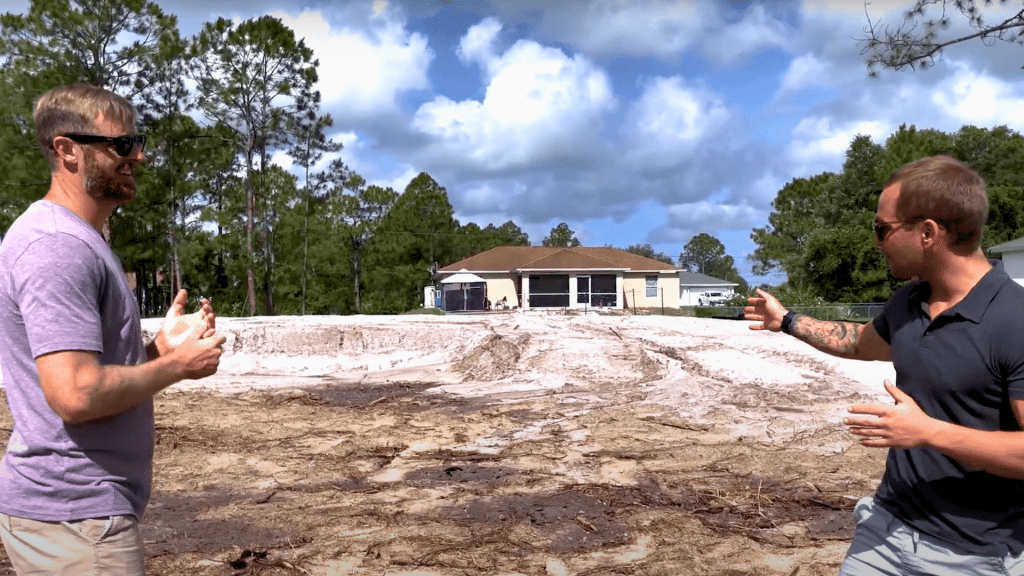
Clear vegetation, level the ground, and build up a compacted pad to ensure proper drainage. Set up your permit box, porta-potty, and any required safety measures. Consider installing cameras or security to protect materials on site.
Step 3: Lay the Foundation
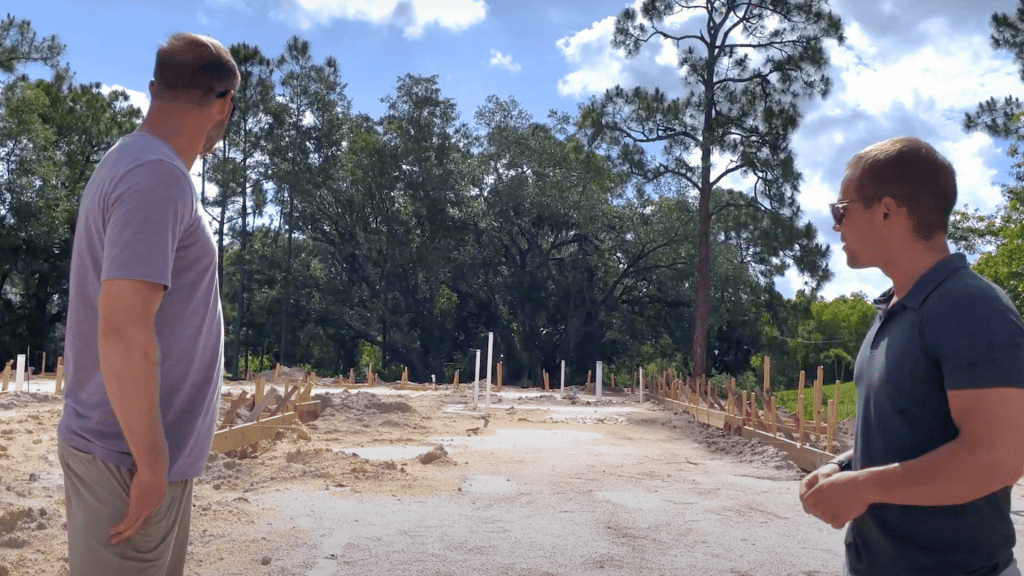
Form and pour the footings, add rebar for structural strength, and rough in plumbing and water lines before the slab is poured. In some areas, concrete block walls may be added for hurricane resistance.
Step 4: Build the Structure
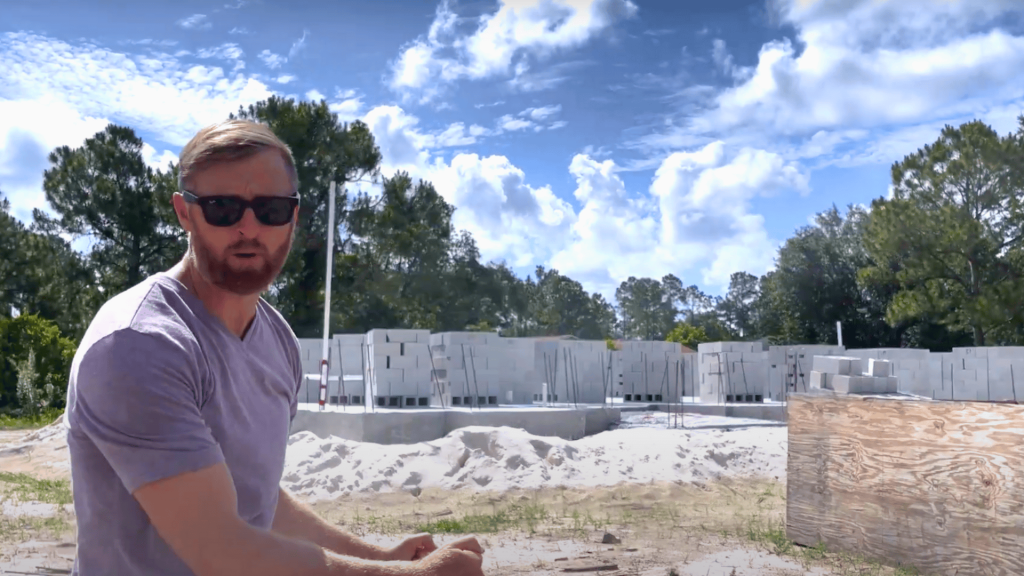
Frame the house, set the trusses, and install the roof to make the structure weather-tight. Complete rough plumbing, electrical wiring, and HVAC ductwork during this stage before insulation and drywall.
Step 5: Install Utilities & Exterior Protections
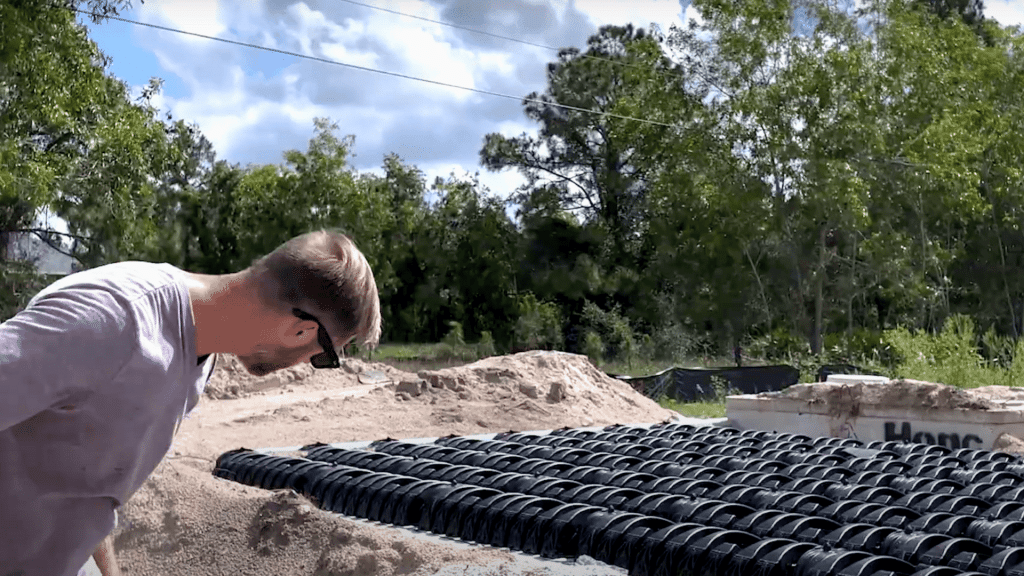
Connect the home to public utilities or install the well, pressure tank, and septic system. Add gutters, extended downspouts, and grading to move water away from the foundation and protect the pad.
Step 6: Finish and Inspect
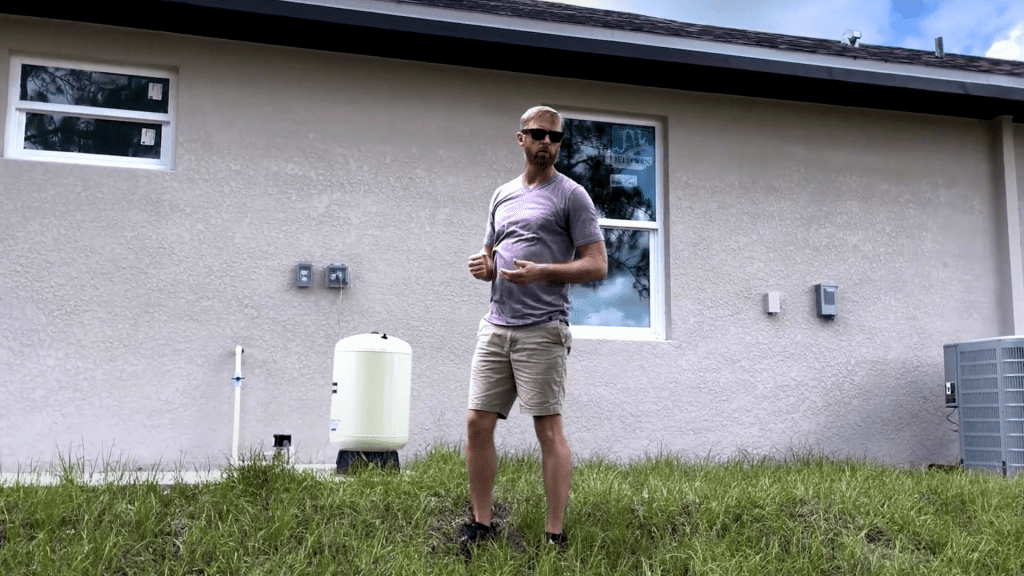
Add flooring, cabinetry, fixtures, siding, and paint to complete the home. Landscape the yard, schedule all required inspections, obtain your certificate of occupancy, and move in.
By following these steps in order, you’ll stay organized, meet local requirements, and move into a well-built home that’s ready to last for years.
For a detailed overview, watch this video:
How to Check If Your Land is Ready for Building
Before starting construction, it’s important to make sure your property can legally and safely support a home. Begin by confirming zoning regulations and building codes with your local planning department to make sure your intended use is allowed.
Check for easements, deed restrictions, or HOA rules that could limit your design or placement.
Next, arrange a land survey to establish boundaries and identify any encroachments. Conduct a soil test to determine the soil’s load-bearing capacity and drainage quality.
This will guide your foundation design. Evaluate utility access for water, sewer, electricity, and gas; if unavailable, plan for a well, septic system, or alternative power sources.
Finally, review environmental and topographical factors, such as flood zones, slope, and drainage patterns, which can affect both construction costs and long-term maintenance.
By addressing these checks early, you’ll avoid costly surprises and make sure the land is truly build-ready.
Best Tips for Working with Builders and Contractors
Working with the right builder or contractor can save you time, money, and stress. These tips will help you choose the right professional and maintain a smooth working relationship:
- Research and Verify Credentials: Look for licensed, insured builders with proven experience in projects like yours. Check references, read reviews, and visit past or active job sites to assess quality.
- Set Clear Expectations Upfront: Discuss your budget, project timeline, and desired outcomes before signing a contract. Ensure all details, from materials to payment schedules, are documented in writing.
- Communicate Regularly: Schedule consistent check-ins to track progress and address questions early. Use photos, site visits, or reports to stay informed without micromanaging.
- Understand the Contract: Review every clause carefully, especially regarding change orders and additional costs. Knowing what’s included prevents unexpected expenses later.
- Build a Respectful Relationship: Be professional, responsive, and open to their expertise. A cooperative approach often leads to better solutions and smoother problem-solving.
By choosing the right builder and fostering open communication, you can keep your project on schedule, control costs, and get the results you envisioned.
Should You Build or Buy? Pros and Cons
Choosing between building a new home and buying an existing one comes down to your priorities, budget, and timeline. This table highlights the main pros and cons of each option:
| Option | Pros | Cons |
|---|---|---|
| Build a Home | Full control over design, layout, and featuresEverything is brand Potential for better energy efficiency and lower maintenance early on | Longer timeline to completeHigher risk of cost overrunsPossible delays from labor or material shortages |
| Buy an Existing Home | Faster move-in, often within weeksEstablished neighborhoods with amenities and landscaping, initial planning required | May need to compromise on design or locationPotential repairs and updates neededOlder systems may mean higher maintenance costs |
If you value customization and modern features, building might be worth the wait. If you want speed and convenience, buying could be the better fit.
Stories of Turning Land into a Home
Andre Ewert, Former Real Estate CEO and Investor (1983–2009)
He shared the story of a friend in Mexico who, with no money for a larger home, began by simply drawing plans for a house on his land. A chance encounter with a neighbor led to funding once the build was 80% complete, and through savings, credit, and persistence, he finished the home before the program closed.
Robert Bernard Sawyer, AIA: Architect
He described the “pod concept,” which involves starting with a small, expandable core structure to keep costs low. Inspired by Frank Lloyd Wright’s 1940s Usonian houses, this approach uses affordable materials and sustainable features like solar and greywater systems. With planning and the willingness to start small, anyone can gradually create a functional, lasting home.
Common Mistakes to Avoid
Even with the best planning, certain oversights can delay your project or increase costs. Knowing these common mistakes will help you avoid unnecessary setbacks.
- Skipping a Land Survey: Failing to confirm property boundaries can lead to disputes with neighbors and costly adjustments during construction.
- Overlooking Soil and Site Conditions: Poor soil, drainage issues, or steep slopes can require expensive foundation changes if not addressed early.
- Not Checking Zoning and Permits: Starting work without proper approvals can result in fines, delays, or even demolition orders.
- Underestimating the Budget: Ignoring hidden costs like utility connections, site prep, and permit fees can strain finances before the project is complete.
- Choosing the Wrong Builder: Hiring without checking credentials, references, and past work can lead to quality issues and missed deadlines.
- Neglecting Future Maintenance Needs: Designing without considering upkeep, such as drainage systems or durable exterior materials, can cause long-term problems.
By planning carefully, working with trusted professionals, and addressing potential issues early, you can keep your build on schedule and within budget.
Conclusion
Building a home can seem like a big challenge, but with the right steps, it’s completely manageable. By now, you know how to check if your land is ready, plan your budget, work with builders, and avoid costly mistakes.
If you’ve been asking yourself, “I want to build a house on my land. Where do I start?” this gives you a clear path forward. Start small, plan carefully, and take each step as it comes.
Stay flexible, keep communication open, and make choices that work for your long-term needs.
For more ideas and practical tips to support your project, check out my other posts on home building, design, and maintenance.





